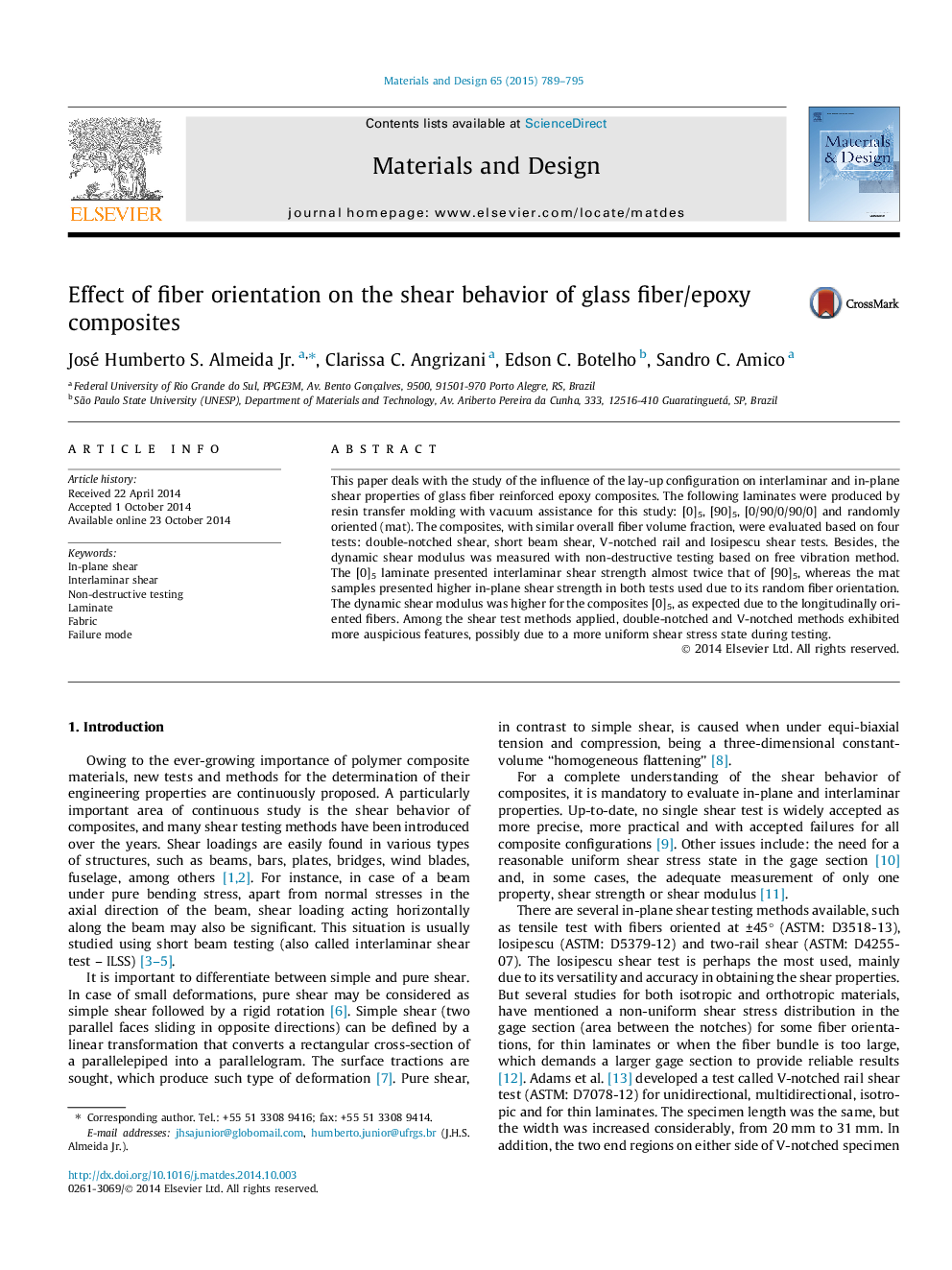| Article ID | Journal | Published Year | Pages | File Type |
|---|---|---|---|---|
| 828869 | Materials & Design (1980-2015) | 2015 | 7 Pages |
•Structural composites manufactured by RTM with vacuum assistance.•In-plane shear strength evaluated by V-notched shear test method.•Interlaminar shear strength evaluated by double-notched shear test.•Experimental assessment of different in-plane and interlaminar tests.•Dynamic shear modulus accomplished by non-destructive testing.
This paper deals with the study of the influence of the lay-up configuration on interlaminar and in-plane shear properties of glass fiber reinforced epoxy composites. The following laminates were produced by resin transfer molding with vacuum assistance for this study: [0]5, [90]5, [0/90/0/90/0] and randomly oriented (mat). The composites, with similar overall fiber volume fraction, were evaluated based on four tests: double-notched shear, short beam shear, V-notched rail and Iosipescu shear tests. Besides, the dynamic shear modulus was measured with non-destructive testing based on free vibration method. The [0]5 laminate presented interlaminar shear strength almost twice that of [90]5, whereas the mat samples presented higher in-plane shear strength in both tests used due to its random fiber orientation. The dynamic shear modulus was higher for the composites [0]5, as expected due to the longitudinally oriented fibers. Among the shear test methods applied, double-notched and V-notched methods exhibited more auspicious features, possibly due to a more uniform shear stress state during testing.
